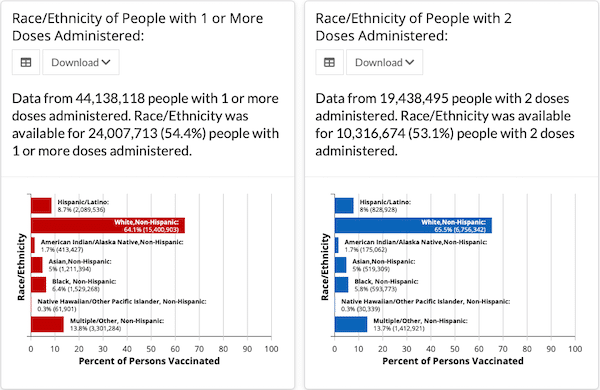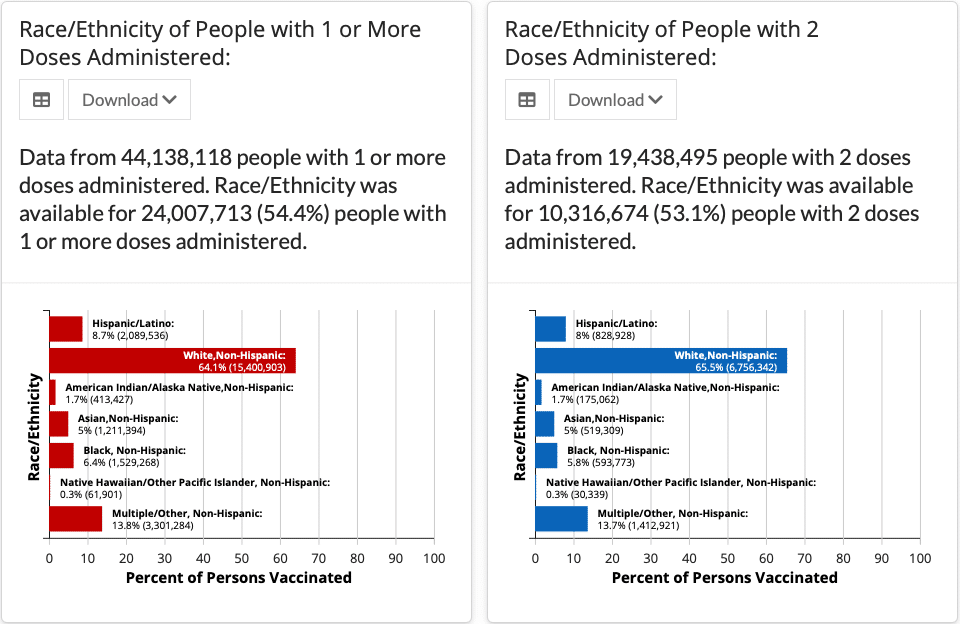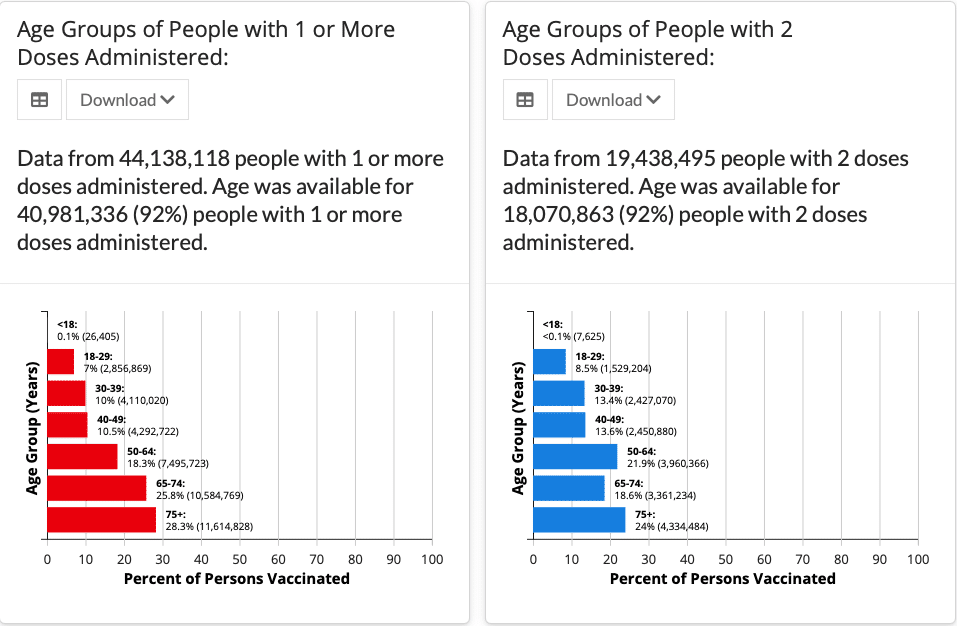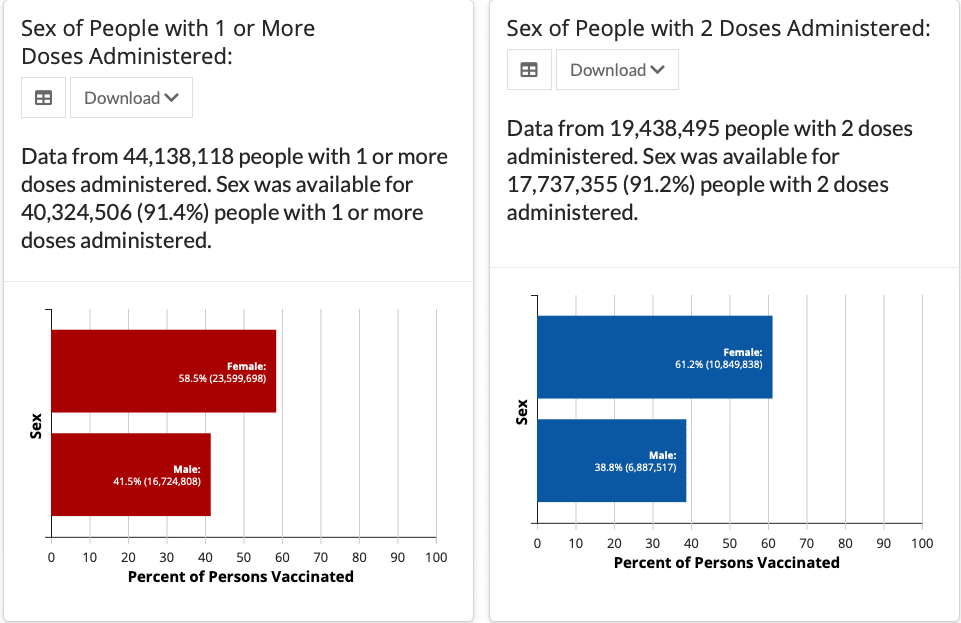The Centers for Disease Control and Prevention (CDC) is working with states to provide more information on the demographic characteristics of vaccinated people.
These demographic data only represent the geographic areas that contributed data and might differ by populations prioritized within each state or jurisdiction’s vaccination phase. Every geographic area has a different racial and ethnic composition, and not all are in the same vaccination phase. These data are thus not generalizable to the entire U.S. population.
Percentages displayed in the charts below represent the percent of people vaccinated for whom the demographic variable of interest is known.
†Data will be updated as soon as they are reviewed and verified, often before 8:00 pm ET each day. However, daily updates may take longer if there are any delays in data reporting.
Data on doses of vaccine administered included data received by CDC as of 6:00 am ET on the day of reporting. Vaccination data on the CDC COVID Data Tracker are updated daily (including weekends) between 1:30 pm and 8:00 pm ET. Updates will occur the following day when reporting coincides with a federal holiday.
These data represent a subset of individuals in U.S. states and U.S. territories for whom data have been reported. The demographic data include people vaccinated through all parts of the program, including those vaccinated through pharmacies, the Federal Pharmacy Partnership for Long-Term Care (LTC) Program, and federal entities. The demographic data reported have varying degrees of missing data and are not generalizable to the entire population of individuals with COVID-19 vaccination. Missing data may be influenced by inconsistent collection of race and ethnicity information at the time of vaccination, differences in state data electronic data programs, as well as some jurisdictional policies or laws that do not allow demographic data to be reported.
Emergency Use Authorization has been granted for use of the Pfizer-BioNTech vaccine among people aged 16 and older and use of the Moderna vaccine among people aged 18 and older. Therefore, vaccine use is limited among those under age 18.
Definitions:
People receiving 1 or more doses represent the total number of people who have received at least 1 dose of vaccine. People receiving 2 doses represent the number of people who received a second dose of vaccine. **The number of people receiving 1 or more doses and the number of people receiving 2 doses were determined based on information reported to CDC by state, territorial, and local public health agencies and federal entities on dose number, administration date, recipient ID, and date of submission. Because the method used to determine dose numbers needs to be applied across multiple jurisdictions with different reporting practices, CDC’s dose number estimates might differ from those reported by jurisdictions and federal entities. A dose number was determined for nearly all reported doses administered, but because there were some missing data for dose number, the sum of people receiving 1 or more doses and people receiving 2 doses will not exactly equal the total number of doses administered. People receiving doses are attributed to the jurisdiction in which the vaccine was administered.




